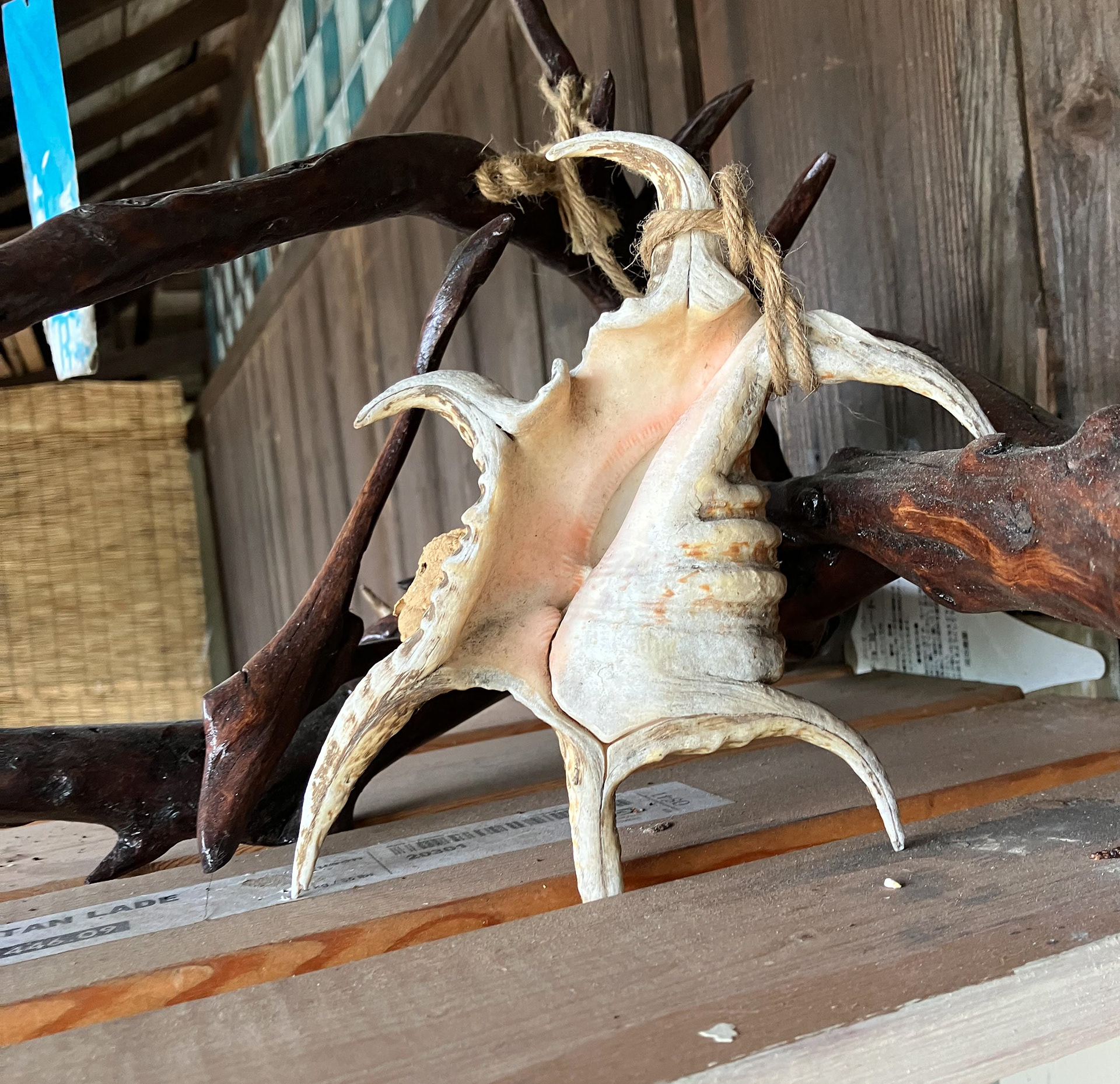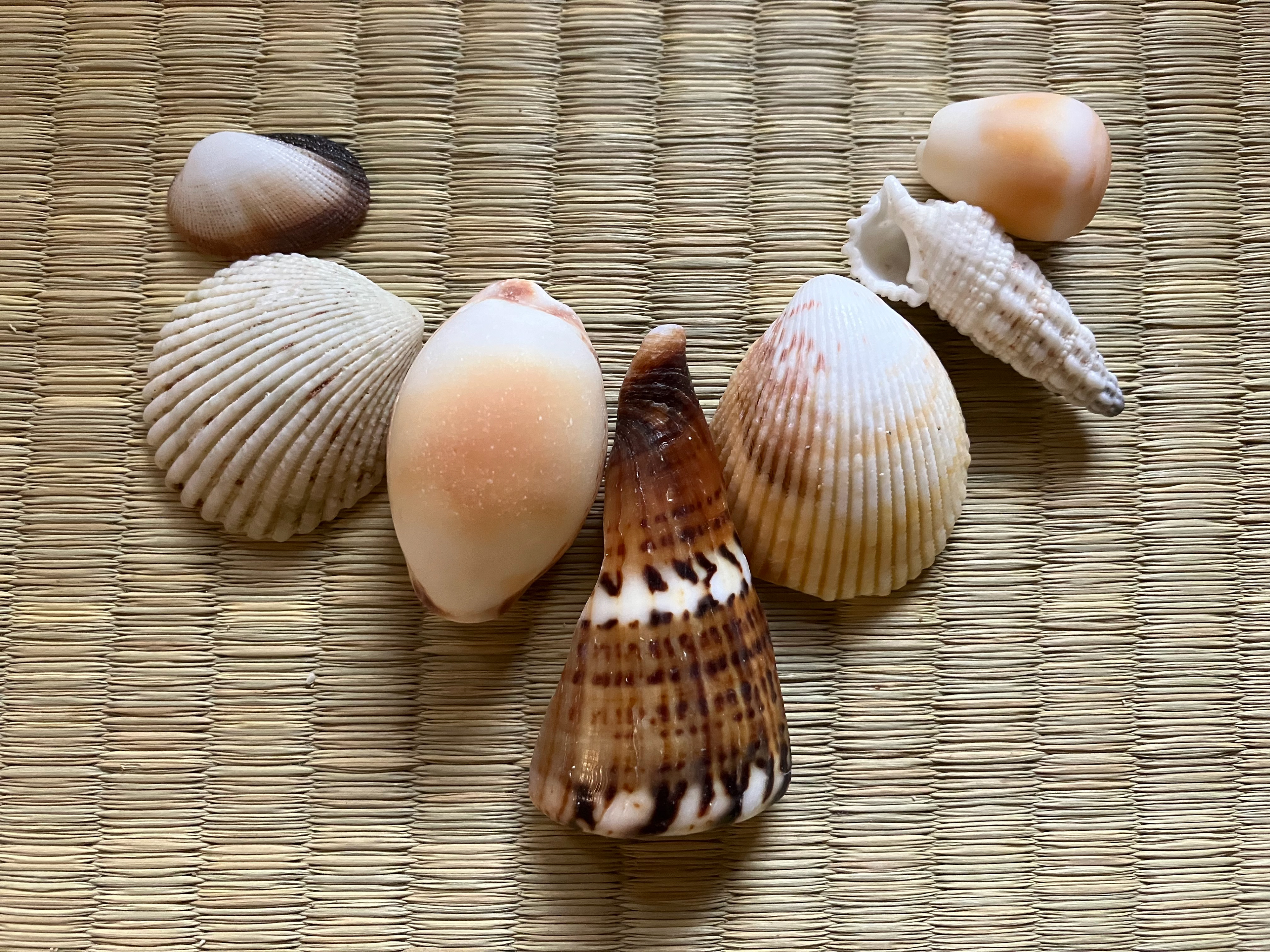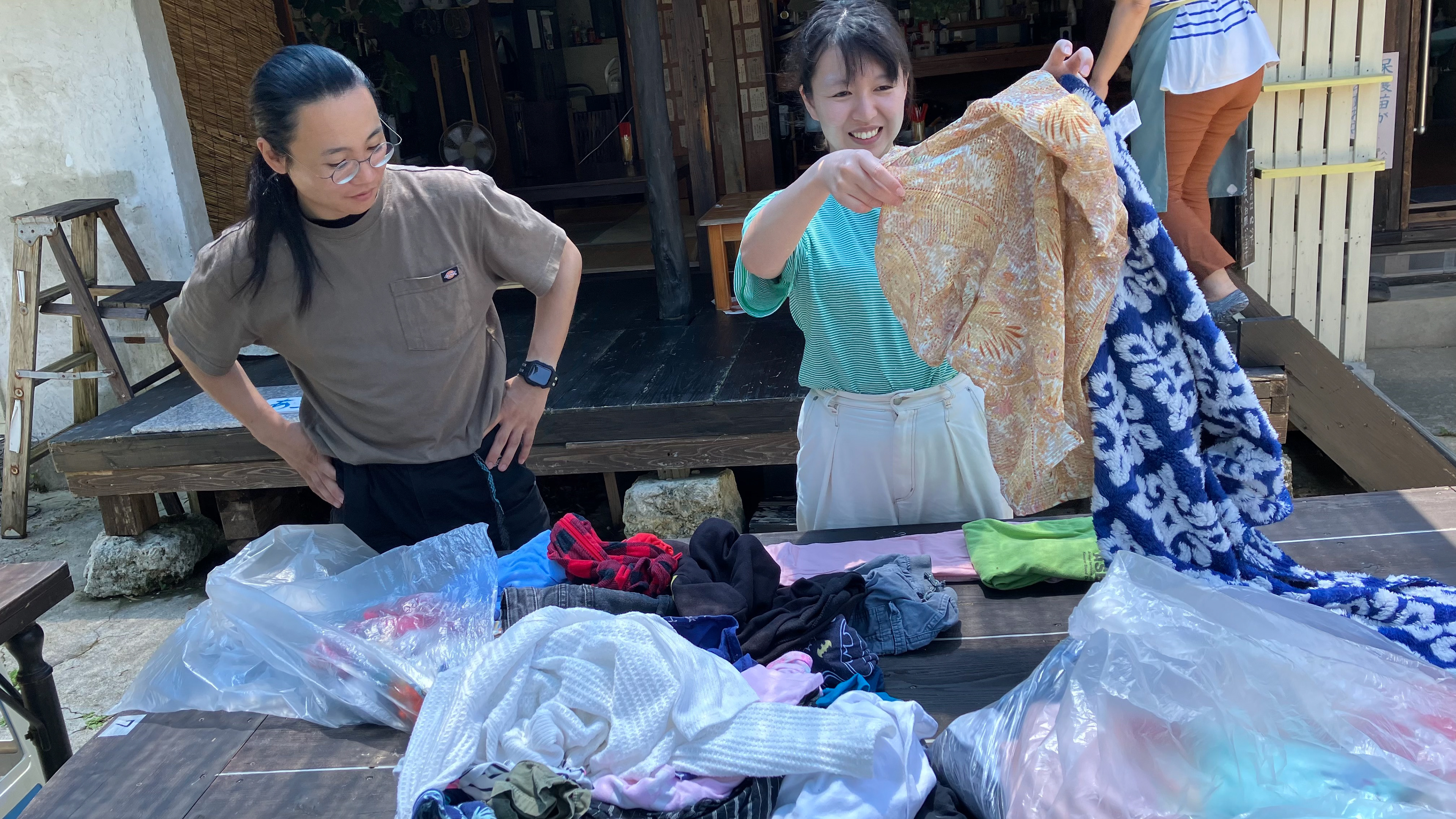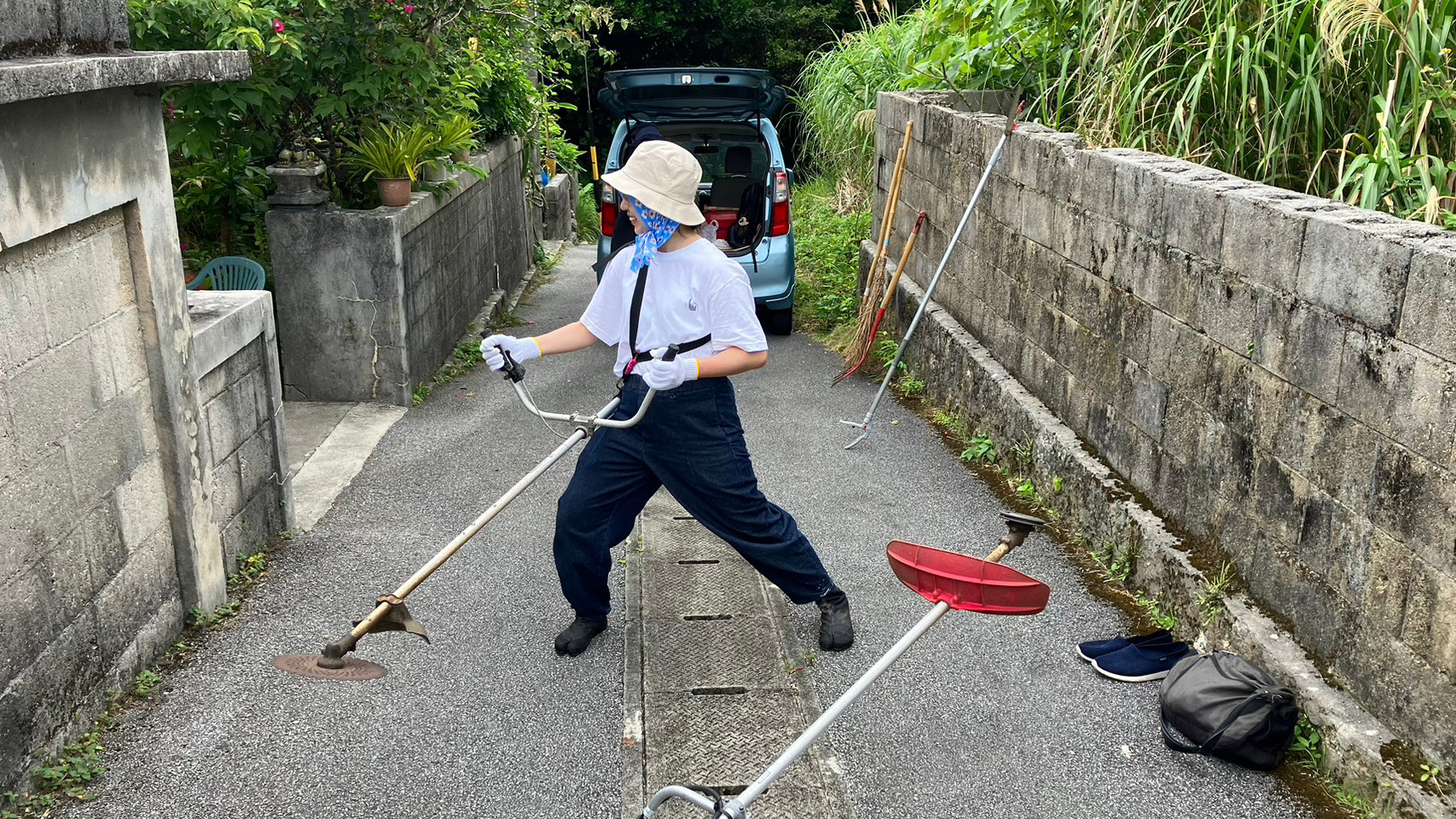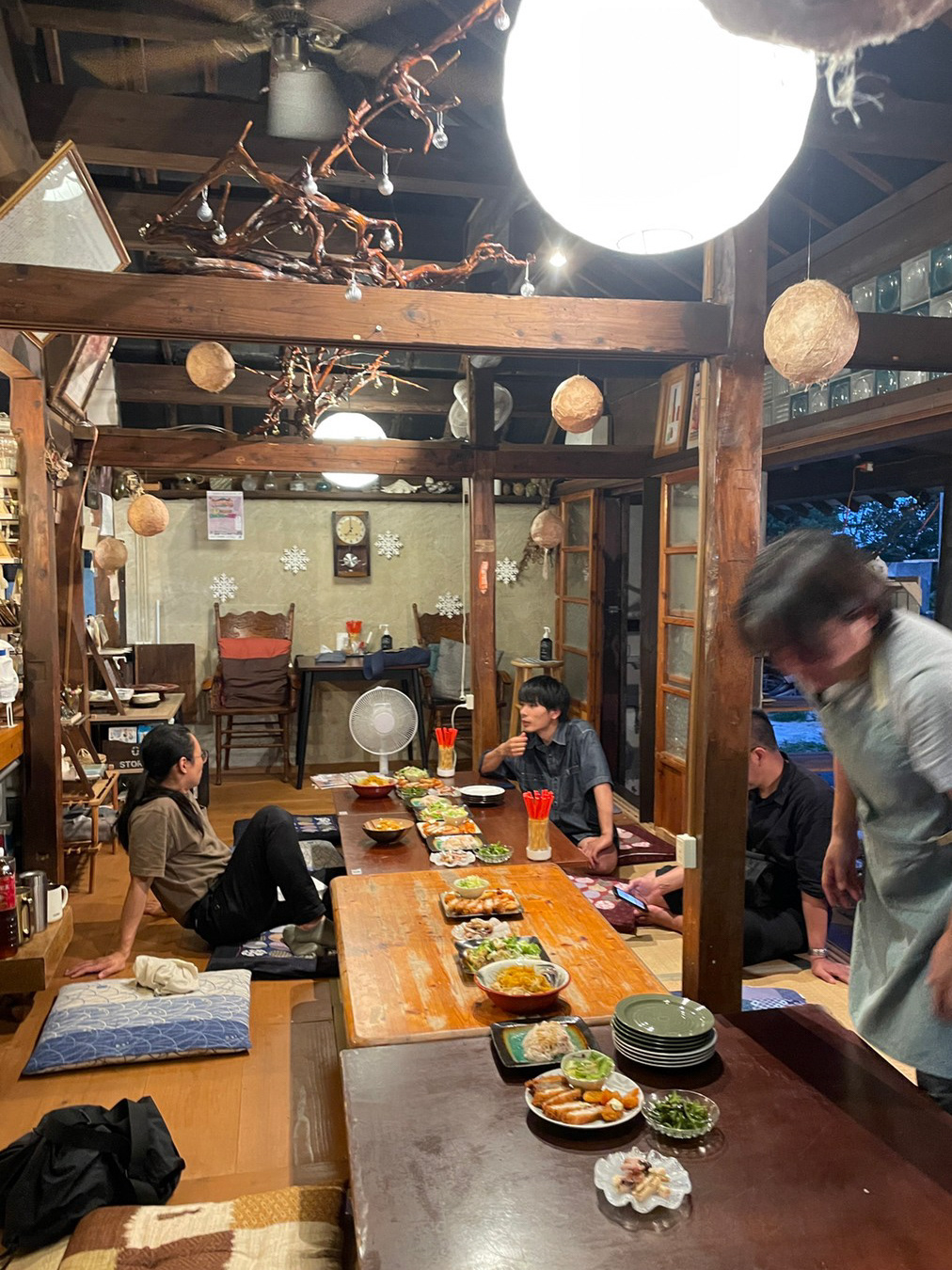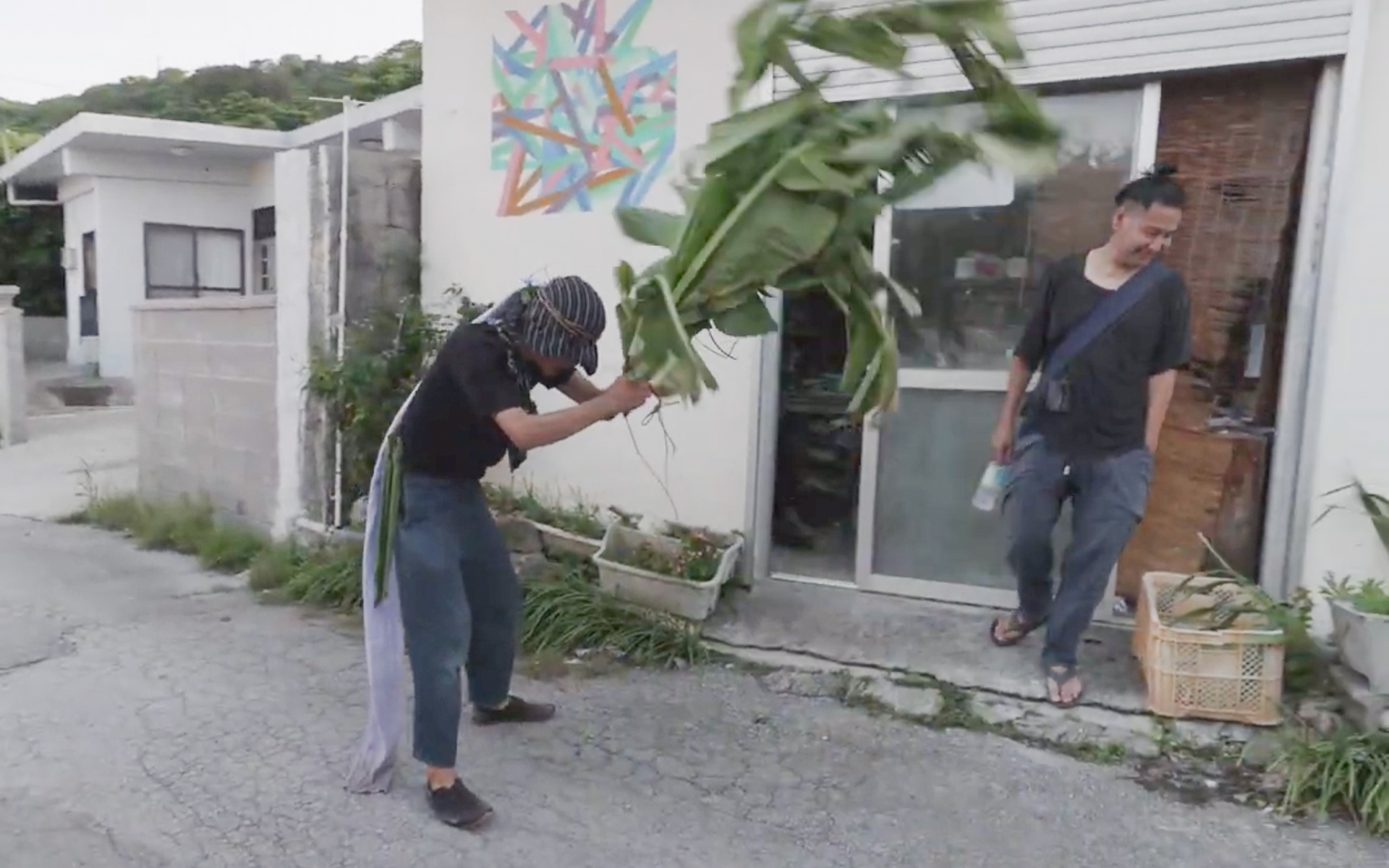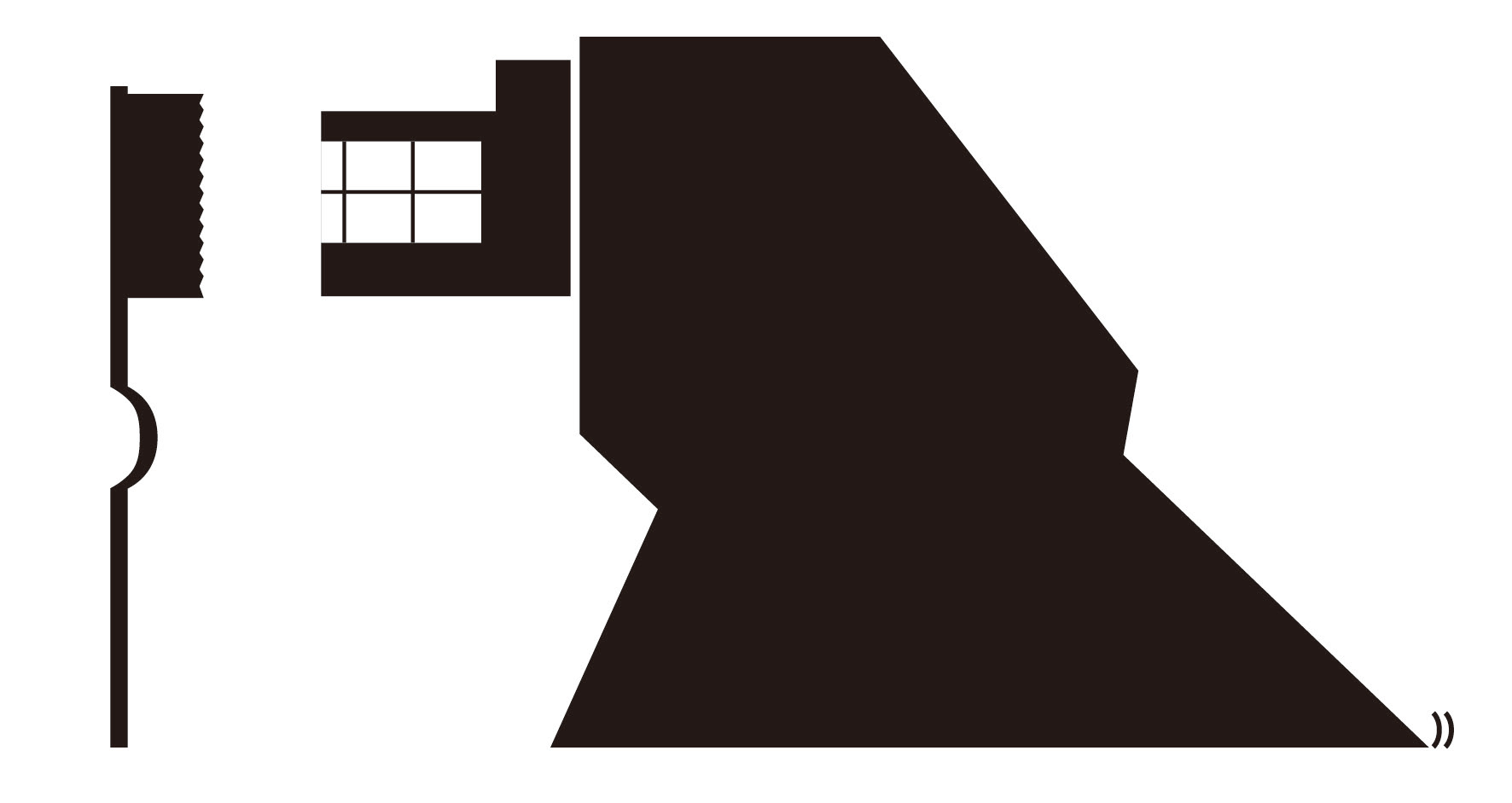沖縄県宮城島
Miyagi island, Okinawa Prefecture
Miyagi island, Okinawa Prefecture
宮城島は沖縄県東部に位置しており、那覇市のような都市の暮らしとは対極的に古い沖縄の暮らしが現代に残る島だ。それは伝統家屋や魔除けの風習などさまざまである。人口は600人前後であり、過去の滞在の中では最もミニマムな人口規模のコミュニティと言える。この地に2023年5月29日から6月4日まで滞在した。
滞在が始まってすぐに、散歩をしたり自転車を乗り回したりして、島をくまなく回った。また、住民との交流の中で、草刈り、屋根塗り、大工仕事などをお手伝いしながら、地域の暮らしへの理解を深めていった。ただし、宮城島はシンボリックな何かがあるわけでもないので、土地の文脈を読み解きづらく、シシ作りには苦労した。
今回、制作したシシの発想の原点は、身体への制約だった。入り組んだ地形がグネグネと身体を縛り付け、のたうつような身体動作へと結びついた。それが糸や紐によって工藤が稲村を縛るという発想につながった。
また、シシに使用する衣装が身軽で装飾性が高く、はっきりとした獅子頭を持たないものとなった。 それぞれの衣装の特徴としては、船山が島の源である石灰岩で作られた珊瑚を削ってできた笛を鳴らした。工藤は珊瑚を首から垂らした飾りを身につけた。また、古布を結い、へその緒を作り出した。稲村は古布を被り、蔓を蒔き、貝の首飾りやイヤリングを身につけ、バナナの葉を尾のように腰にくくりつけた。
実際に演舞したのは6月3日と4日の2日間だった。3日は宮城島の中心に位置する住宅街を舞い歩き、2日目はミンギーという海岸で実施した。2日間を通して、シシは徐々にその形態を変化させて、カメレオンのように環境適応するシシが立ち現れた。これは地形や土地の文脈の多様性を表しているのかもしれない。
また、坂のある凸凹な道だったからこそ、シシの演舞と演舞を繋ぐ練り歩きの場面の歩き方は、蛇行したりステップを踏んだりとかなり変化に富んだものとなった。これは土地が持つ踏みしめる感覚や高低差などの多様性を象徴しているとも言える。 静かで小さな共同体とおおらかでどこまでも広がる海が共存した島だった。
小さくて静かなコミュニティなので獅子舞に対してギョッとする地域住民も多かっただろうが、基本的に告知をすれば受け入れてもらいやすいだろうし、獅子舞生息可能性という意味では高かった。一方で、土地文脈の多様性からどこかその生息に対する未知数にも感じられた。(2023年5月29日〜6月4日)
Miyagi Island is located in the eastern part of Okinawa Prefecture, and is an island where old Okinawan lifestyles remain to this day, in contrast to urban lifestyles such as Naha City. These include traditional houses and customs to ward off evil spirits. The population is around 600 people, and it can be said that it is a community with the smallest population size among the past stays. I stayed here from May 29th to June 4th, 2023.
Shortly after our stay started, I went all over the island, taking walks and riding my bike. In addition, he deepened his understanding of local life while helping with mowing, roof painting, and carpentry work while interacting with residents. However, since Miyagi Island does not have anything symbolic, it was difficult to decipher the context of the land, and I had a hard time making Shishi.
The starting point for the idea of Shishi, which I created this time, was the restriction on the body. The intricate topography bound my body tightly, leading to writhing body movements. This led to the idea of Kudo binding Inamura with threads and strings.
In addition, the costumes used for Shishi were light and highly decorative, and did not have a clear lion head. As a feature of each costume, Funayama played a flute made by carving coral made from limestone, which is the source of the island. Kudo wore an ornament with coral hanging from his neck. He also tied old cloth and made an umbilical cord. Inamura wore an old cloth, planted vines, wore a shell necklace and earrings, and tied a banana leaf around his waist like a tail.
The actual performance was on June 3rd and 4th. On the 3rd, we danced around a residential area located in the center of Miyagi Island, and on the 2nd day, we held a beach called Mingi. Over the course of two days, the shishi gradually changed its shape, and a chameleon-like shishi that adapted to the environment appeared. This may represent the diversity of terrain and land contexts.
Also, precisely because the road was uneven with slopes, the way of walking in the parade that connects the performances of Shishi became quite varied, such as meandering and stepping. It can be said that this symbolizes the diversity of the land, such as the feeling of being stepped on and the difference in elevation. It was an island where quiet, small communities coexisted with a generous and endless sea.
Since it is a small and quiet community, many local residents would have been startled by the lion dance, but basically it would have been easier for them to accept it if they had announced it, and the chances of the lion dance being inhabited were high. On the other hand, due to the diversity of the land context, I felt that there was something unknown about its habitat. (May 29-June 4, 2023)

